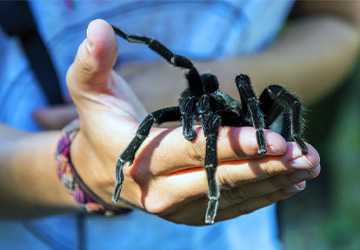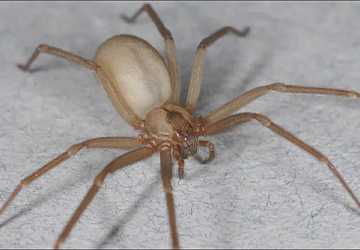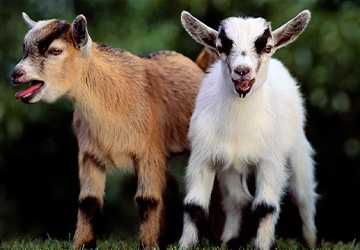Top 10 Myths About Spiders That You Should Know
Spiders have long been the subject of myths and misconceptions, often portrayed as creepy, dangerous creatures lurking in the shadows. While some people genuinely fear these eight-legged arachnids, it's essential to separate fact from fiction. In this article, we will debunk the top 10 myths about spiders that you should know. By understanding the truth about these fascinating creatures, you may be less fearful and more appreciative of their essential role in our ecosystem.

All Spiders are Poisonous
One of the most common misconceptions about spiders is that they are poisonous and threaten humans. However, this is far from the truth. While it's true that all spiders produce venom, the vast majority of spider species are harmless to humans. Most spiders cannot even pierce human skin with their fangs.Only a tiny percentage of spider species have venom potent enough to affect humans, and even within that group, fatalities are extremely rare. Spiders use their venom to immobilize their prey, not to attack humans. Most spider bites result in mild, temporary discomfort like a bee sting. The few dangerous species, such as the black widow or brown recluse, are generally shy and unlikely to bite unless provoked.
All Spiders Weave Webs
We often picture intricate, dew-covered webs in the early morning light when we think of spiders. However, not all spiders are web-weavers. While it's true that some species, like orb-weavers and cobweb spiders, are well-known for their web-building skills, many others do not spin webs at all. These non-web-building spiders are known as "hunters" and actively pursue their prey.Wolf spiders, for example, are agile hunters who stalk and pounce on insects, while jumping spiders are known for their incredible leaping abilities. Understanding this diversity in spider behaviour helps dispel the myth that all spiders are web-spinners.
Spiders are Insects
One common misconception is that spiders are a type of insect. In reality, spiders belong to a different class of arthropods called arachnids. While both insects and arachnids are arthropods, they have distinct differences. Insects have six legs, while spiders have eight. Spiders have two body parts (cephalothorax and abdomen), while insects have three (head, thorax, and abdomen).Understanding the difference between spiders and insects is essential for proper classification and recognizing the unique characteristics of these arachnids.

Spiders are Aggressive and Attack Humans
Spiders are often wrongly depicted as aggressive creatures that seek out humans to attack. In reality, spiders are usually quite shy and prefer to avoid humans. Most spider bites occur when a spider feels threatened or cornered, and they bite as a last resort in self-defence.Spiders do not view humans as prey and would rather avoid them than confront us. It's important to remember that their primary goal is to catch and eat insects, not to harm humans. By understanding this, we can appreciate the timid nature of these arachnids.
Spiders are Filthy and Spread Disease
Another prevalent myth about spiders is that they are carriers of disease and are inherently unclean. This couldn't be further from the truth. Spiders are fastidious groomers and keep their bodies clean. They do not carry or transmit diseases like some insects or rodents.Spiders can be beneficial in controlling populations of disease-carrying insects. Preying on mosquitoes, flies, and other pests helps reduce the risk of diseases like malaria or West Nile virus. So, rather than being dirty, spiders are more like nature's pest controllers.
Daddy Longlegs are Highly Venomous
The myth that daddy longlegs (harvestmen) are incredibly evil but unable to bite humans is a common misconception. While nasty, they are not potent enough to harm humans. In addition, daddy longlegs do not possess fangs capable of penetrating human skin.The idea that they are incredibly vicious likely arises from confusion with other arachnids, such as certain spiders. However, daddy longlegs are harmless to humans and are more likely to be prey for other predators than pose any danger themselves.
Spiders are All the Same
Many people lump all spiders together as a single, undifferentiated group. In reality, there are over 48,000 described species of spiders worldwide, each with its unique characteristics and behaviours. Spiders come in various shapes, sizes, and colours, making them one of the most diverse groups of arachnids.Some spiders are tiny, while others are quite large. Some have vibrant colours and patterns, while others are well-camouflaged. Learning to appreciate the diversity of spiders can lead to a better understanding of their importance in the ecosystem.
Spiders Spin Webs to Catch Prey
While the image of a spider's web is iconic, not all spiders use webs to catch their prey. We've already discussed that some spiders are hunters, but not all build the same webs, even among web-weaving spiders. The design of the web varies significantly from species to species.Some spiders construct orb-shaped webs to catch flying insects, while others create funnel webs or cobwebs to trap ground-dwelling prey. The type of web a spider builds is closely related to its hunting strategy and prey preferences. Understanding these variations in web design can help demystify the world of spiders.
Spiders are Cold-Blooded Killers
Spiders are often depicted as cold-blooded killers, waiting patiently for their prey to become entangled in their webs. While it's true that spiders are predators and need to capture insects for sustenance, they are far from ruthless killers.Spiders play a vital role in maintaining ecological balance by controlling insect populations, thus preventing the overabundance of pests. In this way, they are nature's pest controllers, helping to keep our environment in check.
Spiders are Useless and Serve No Purpose
The final myth we need to dispel is that spiders are useless and serve no purpose. This misconception could not be further from the truth. Spiders are essential contributors to our ecosystem. By preying on insects, they help regulate populations of pests, reducing the need for chemical pesticides.Additionally, their silk has inspired numerous technological advances, from medical sutures to lightweight, super-strong materials. The silk spun by spiders is a remarkable engineering marvel and continues to be a subject of scientific research for various applications.
Conclusion
Spiders have long been the subject of myths and misconceptions, but understanding the truth about these arachnids can help us appreciate their essential role in our world. Most spiders are harmless to humans; they are not insects, and they are not aggressive. They play a crucial role in pest control and even contribute to human innovation through their silk. By dispelling these myths, we can foster a greater understanding and appreciation for these fascinating creatures that share our planet. So the next time you come across a spider, instead of fear, consider the vital part it plays in our ecosystem and the wonders it can inspire in the world of science and technology.







